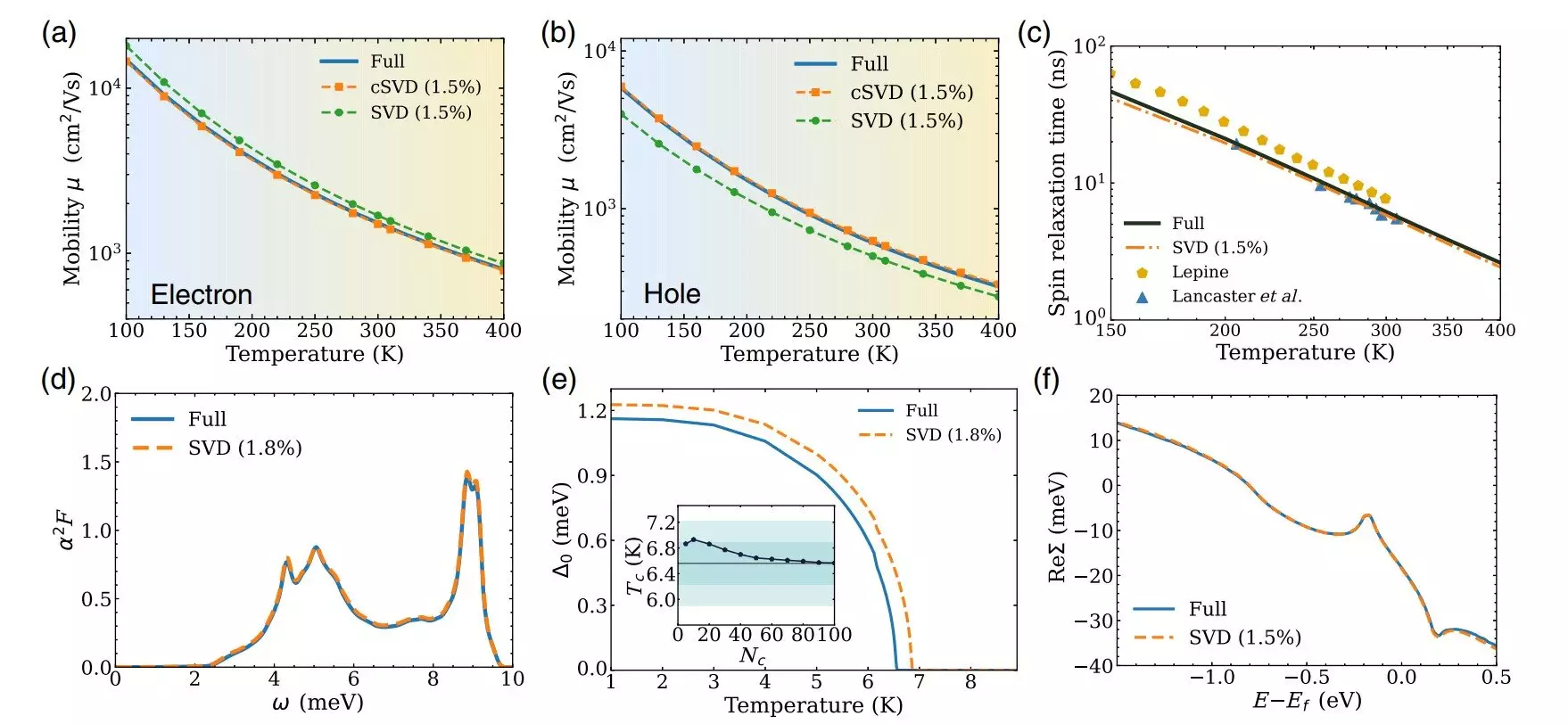Materials physicists and engineers are constantly seeking to understand how electrons interact in new materials and how these interactions affect the behavior of the devices made from them. These questions include the ease of electrical current flow within a material, the possibility of superconductivity at certain temperatures, and the preservation of electron spin in electronic and quantum devices. Thus, a community of materials physicists aims to delve deep into the inner workings of materials, analyzing individual electron interactions and atomic motions.
The Breakthrough Discovery
A recent breakthrough by a team of researchers at Caltech has unveiled a groundbreaking discovery that simplifies the calculations of electron interactions in materials, making them 50 times faster while maintaining accuracy. By utilizing a data-driven method, the research team led by Yao Luo and Dr. Marco Bernardi has managed to significantly reduce the amount of data required for these calculations. This breakthrough allows for more complex calculations and the development of new models that were previously deemed unattainable.
The Innovative Approach
Traditionally, researchers in this field utilized two primary approaches to understand materials. One approach involves building minimal models that simplify the system, allowing for qualitative analysis through parameter adjustments. The second approach, which the team at Caltech focuses on, involves using “first principles” methods that rely on quantum mechanical calculations utilizing large computers for quantitative accuracy. However, these calculations are time-consuming and require vast amounts of data. The new method developed by Bernardi’s group offers a middle ground between these two approaches by truncating the size of computational matrices and extracting key data to generate minimal models of material interactions.
The innovative approach developed by the Caltech team involves applying the singular value decomposition (SVD) method to electron-phonon interactions in materials. This widely used technique in various fields allows researchers to disentangle electronic and vibrational components in matrices of interactions, assigning each fundamental interaction a singular value. By retaining only a small fraction of these singular values, typically 1 to 2%, the researchers were able to achieve results almost as accurate as the full calculation, while significantly reducing computational time.
The application of the SVD method in compressing electron-phonon interactions matrices has provided accurate results for various material properties, including charge transport, spin relaxation times, and superconducting transition temperatures. Bernardi and his team are now extending these calculations to a broader range of material interactions and developing new advanced calculations that were previously considered impossible. Furthermore, they plan to incorporate this new method into their open-source Perturbo code to facilitate faster predictions of material properties related to electron-phonon interactions.
The revolutionary method developed by the Caltech research team represents a significant advancement in simplifying electron interactions in materials. By reducing computational time and data requirements while maintaining accuracy, this method opens up new possibilities for understanding and predicting material properties at the atomic level. The implications of this research extend to various fields, including electronics, quantum devices, and material science, paving the way for future innovations and discoveries.


Leave a Reply